Electric cars have come and gone over the years, gaining and waning in popularity as eco-friendly fashions have flared and faded, but this time they’re here to stay. Of course, the government’s proposal to ban the sale of new internal combustion-engined cars by 2032 plays its part in their assured future, but it’s the recent rash of battery-powered superminis that really points the way to their permanence.
Small cars are big business but the margins are slim, so to invest hefty sums packaging them with expensive electrical internals is as strong an EV endorsement as you’ll get from the automotive industry. Almost all of the major players are in the process of launching a pure-electric supermini or city car, while many have already arrived.
Perhaps the most eagerly anticipated is the Mini Electric, which has been on the cards since the Mini E began field trials over a decade ago. While rivals have taken a cooking approach to their EV babies, Mini has spiced up its offering with a 181bhp motor (shared with the BMW i3s) and Cooper S badging, making this a hot hatch without the environmental hitch.
The 134bhp Peugeot e-208 (you can leave your Yorkshire-tinged French hatchback jokes at the door) trails the Mini on performance but promises greater practicality, both in terms of the space available in its five-door shell and its promised 217- mile range. The Mini can muster just 144 miles, although the claims for all three cars here should be taken with a pinch of salt, as we shall see.
Both have to give best to the 238-mile WLTP figure for the Renault Zoe, which appears here freshly facelifted and complete with a more powerful motor – now 132bhp – and greater stamina from larger 52kWh lithium ion cells. Unlike its rivals here that have been developed to be propelled by fossil fuels as well as electricity, the Renault is exclusively an EV. It’s also Europe’s best-selling small electric car by miles.
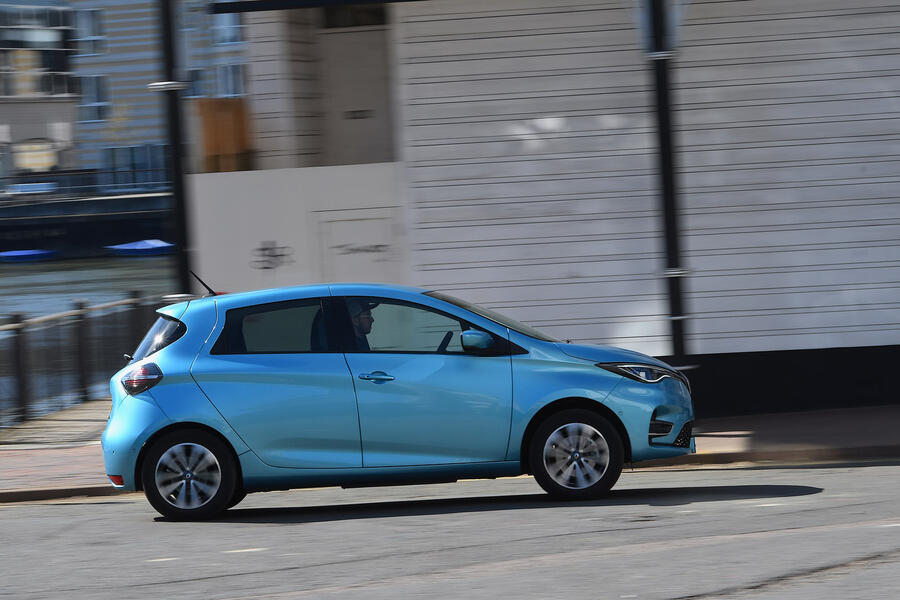
Visual updates to the Zoe have been minor, its LED-haloed headlights being the most obvious change to the tall and narrow machine. It’s distinctive but not as handsome as the e-208, which is one of the French firm’s most successful small car designs since (whisper it) the 205. Only the clunky wheel-arch extensions jar visually – although at least they are functional, covering the wider rear track necessary to accommodate its lithium ion battery.
Despite its basic shape being the most familiar, it’s the Mini that attracts the most attention, with alloys that appear to have been designed during a Minecrafting session and lemon yellow trim inserts at least helping to turn heads.
Inside, the Mini has its rivals licked for quality and ambience, the standard car’s impeccable fit and finish enhanced by the neat ‘floating’ instrument cluster sitting ahead of the driver. There’s precious little space, though. Driver and passenger are comfortably catered for but those in the back are cramped due to a rear bench raised to house the battery cells beneath. Access through the gap between the front seats and B-pillar is tight, and the 211-litre boot is no more than vestigial, particularly when full of charging cable.
The Renault’s 338-litre boot is the biggest here, 27 litres up on the e-208, while occupants in the rear get more leg room than in the Mini. What they don’t benefit from is head room, again due to a high-set rear bench forced by the battery under the floor. This extends to the front seats, meaning you’re sitting on rather than in the Zoe. On the flipside, the elevated view makes the Renault the most assured choice in the urban cut and thrust. Quality has improved over the previous versions, but there are still lots of hard and scratchy plastics alongside the new recycled fabrics and improved TFT screens.

Most welcoming is the Peugeot, its body packing the most space for people front and rear (it’s easily the most family-friendly), while the bold dash architecture looks great. The 3D instrument cluster is a particular treat, provided you can see it over the small-diameter steering wheel (some of our testers couldn’t). There are still some below-par plastics to be found, but overall the e-208’s cabin feels classy and sophisticated.
It’s an impression that’s reinforced on the move, at which point the Peugeot makes the most of the unobtrusive benefits of electric power to deliver a smooth and refined driving experience. Our test route took in towns, motorways and some wiggly secondaries, and over all of them the e-208 is calmer than the competition. Its relatively soft suspension smothers bumps, and it’s quiet, with even big impacts issuing little more than a muffled thud from the springs and dampers.
Neither rival can get close to the e-208 in this regard. The Mini matches the Peugeot’s hushed approach yet lacks its suppleness, while its extra firmness causes the car to follow rather than swallow imperfections.
The Zoe isn’t as stiff-legged as the Mini but feels more brittle, with broken surfaces sending shudders through the structure. It’s also noisier, the suspension clonking and crashing in protest over surfaces the other two keep to themselves. It also develops more wind and road noise than the other two, making it the least suited to longer-haul trips.
It’s not the only noise issuing from the Renault, which at low speeds emits a strange Dan Dare-like sci-fi whirring intended to keep pedestrians on their toes. Off the line, the Zoe’s more powerful motor delivers a useful extra turn of speed, and like all electric cars there’s instant urge and, up to around 50mph, the Renault feels warm-hatch quick.
Its regenerative braking is the weakest here, however, as even in B mode there’s not as much retardation as in the e-208 and Mini, which can both be driven effectively as one-pedal cars in day-to-day dicing. The British-built machine’s dash-mounted toggle for accessing the increased brake-energy retardation is more of a faff than the two French machines, which require little more than slotting the gearlever to B.
While it has more power than before, the 1502kg Zoe succumbs to the Peugeot for get-up-and-go. That said, the Peugeot doesn’t feel as quick as the figures suggest, its impressive refinement sapping some of the speed sensations. Switching to Sport takes some resistance out of the throttle pedal for quicker response while raising the top speed to 93mph and rendering the e-208 a demon starter away from the lights.

Neither can match the far more powerful Mini for zest, though. The Cooper S responds to the throttle with an elastic energy that tricks you into thinking the car is lighter than it actually is. Again the linear delivery plays its part here, as does that muscular 199lb ft and lowest-on-test weight. Engaging Sport adds greater sharpness to the throttle, while in all modes the Mini offers greater thrust at higher speeds, continuing to accelerate with reasonable vigour above 60mph – although from here on in it would be shown a dirty pair of tailpipes by the internally combusted model.
The Mini continues to play the entertainer as the roads turn twisty, the Electric version serving up a puppyish up-and-at-’em agility. Curiously, the steering feels lighter than the ICE car, but there’s some feel and it’s as quick as ever. The Mini dives for apexes with the zeal of a bloodhound on the scent, and there’s lots of grip and tight body control, while killing the throttle mid-corner results in a strong tightening of line, enhancing the sense of agility.
The Zoe feels vertiginously high after the Mini, almost SUV-like from behind the wheel. And while the flat seats are fine at a cruise, they offer little support as cornering forces grow. The Zoe clings on harder than you’d think but lifeless steering means it’s not exactly fun, although a lowish centre of gravity and decent body control allow you to scoot through bends with poise and pace.
You feel better located in the lower-slung Peugeot, which on initial acquaintance slices through corners with a familiar French fluidity. If anything the steering, heavier than the Mini’s, is a little too sharp, but it’s precise and there’s decent front-end bite. Push harder and the composure cracks as the softer dampers fail to control bigger body movements and the e-208’s nose ploughs wider, sooner. Lifting the throttle gets things back on track, but neither French car is as adjustable and biddable as the fun-loving Mini. Where the Peugeot and Renault really score over the Cooper S is in their ability to travel further between charges.
Arguably range is even more important on small cars, which are likely to be town-bound where driveways are in short supply, meaning you’ll have to fight it out with others for roadside chargers. Realistically you can knock about 40 miles off the WLTP figures for all of these machines. That drops the Mini’s real-world figure to just north of 100 miles, which is poor compared with the easy 170 miles-plus achievable in the other two.

The Mini’s range lacks the resilience of the others, too. Its miles drop off as you crank up the air-con, switch on headlights or use that extra performance. The French pair are less affected, helping to instil a confidence that you can travel as far as the readout insists that you will. That said, none of our trio likes high cruising speeds, which see the miles tumble from the range faster than they roll under your wheels.
So where does that leave us? Well, matters are complicated by the fact that these are three very different takes on the small EV, each trying to attract a slightly different type of buyer. Plus there’s the thorny subject of price: even in their most basic guises these are expensive superminis, and that’s taking into account the potential ‘fuel’ savings.
The Renault’s range is truly impressive, plus it offers decent practicality. Yet it can’t match the other two for quality, refinement or driver appeal. And it feels less expensively engineered than its pair of rivals, which would be fine if it didn’t cost more than them to buy. Less expensive versions of the Zoe make more sense than this GT Line.
The Cooper S feels like nothing less than a premium product, and for driving fun it’s head and shoulders above the rest, plus at £24,900 for the entry-level model it’s fractionally the most affordable. Yet it’s hamstrung by that range and an interior that is a little too bijou for it to double up as the sort of occasional family transport supermini drivers typically demand – in terms of space it’s more of a Volkswagen e-up rival.
The Peugeot? Well, it’s the most compelling package, striking a neat balance between the practicality and range of the Renault and the quality and refinement of the Mini. No, it’s not the most thrilling to drive, but it features the most even spread of talents and demands far fewer compromises – and for a motoring public getting used to an inevitable EV future, that’s a good thing.
Sub-£30k used alternatives

2019 Hyundai Kona Electric: Our test cars’ budget could also buy you a barely used Hyundai Kona Electric. A whopping 64kWh battery gives the Kona up to 279 miles between plug-ins, which is far more than any of the others here. It’s also good to drive, with punchy performance and a spot-on driving position, and decently equipped.

2014 Tesla Model S: It will be getting on a bit and have around 60,000 miles on the clock, but many will see that as a small price to pay for putting an on-trend Tesla on their driveway. It’s only the 60kWh version but it claims a 208-mile range. Er, reliability might be an issue, though…
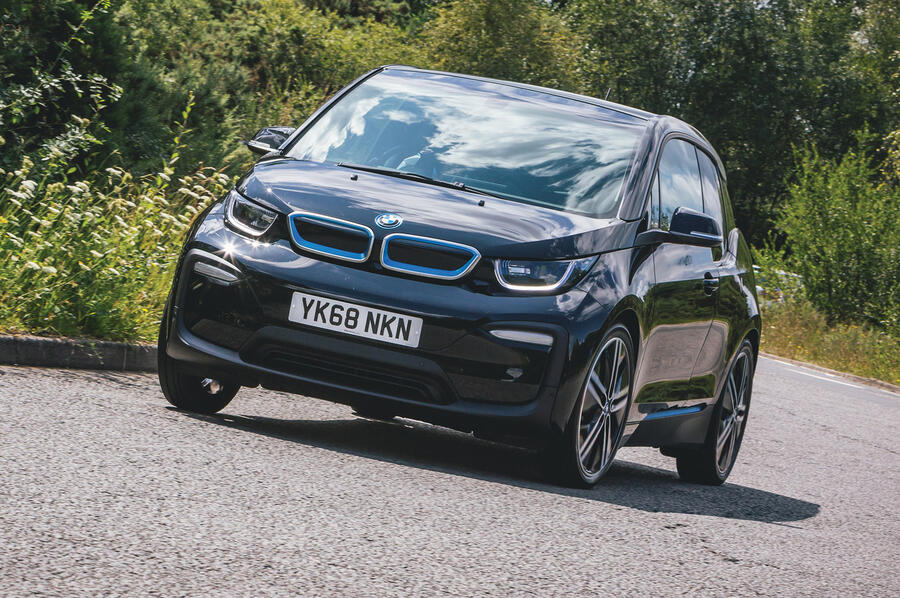
2019 BMW i3 120AH: For around £26,000, a used BMW i3 makes a good case for itself against the all-new Mini Electric. Examples from 2019 got an enlarged 42.2kWh battery pack, meaning it has similar electric range, plus there are back doors, so it’s slightly more practical, and it can be rapid-charged as often as you like.
Plug and play
The Mini can handle both AC and rapid 50kW DC charging as standard. Use a three-pin domestic socket and you’re looking at a 12-hour charge time, which means a wallbox is a must-have. BP Chargemaster is Mini’s preferred supplier and for £549 will install a unit that will slash electrical refills to just over three hours. Use one of the DC units and you can achieve an 80% charge in a smidge over half an hour.
Bigger batteries in the Peugeot and Renault mean longer charging times – the Zoe needs nearly 40 hours from a three-pin plug. You’ll need to pay an extra £1000 for the DC 50kW rapid-charging option on the Renault, but on the flipside the car comes with a 7kW installed wallbox included in the price. The e-208 is also currently available with a free wallbox installation, plus for £300 you can add the CCS DC charger that features a best-in-class 100kW charging capability, meaning 80% capacity replenished in half an hour.
Naturally all three feature sat-nav that can guide you to a public charging point – although they can’t tell you whether it’s actually going to be working when you get there…
READ MORE
New Mini Electric revealed as affordable Brit-built EV
First drive: 2019 Mini Electric driven on track
Fast-evolving EV market means buyers now want hot versions, says Renault






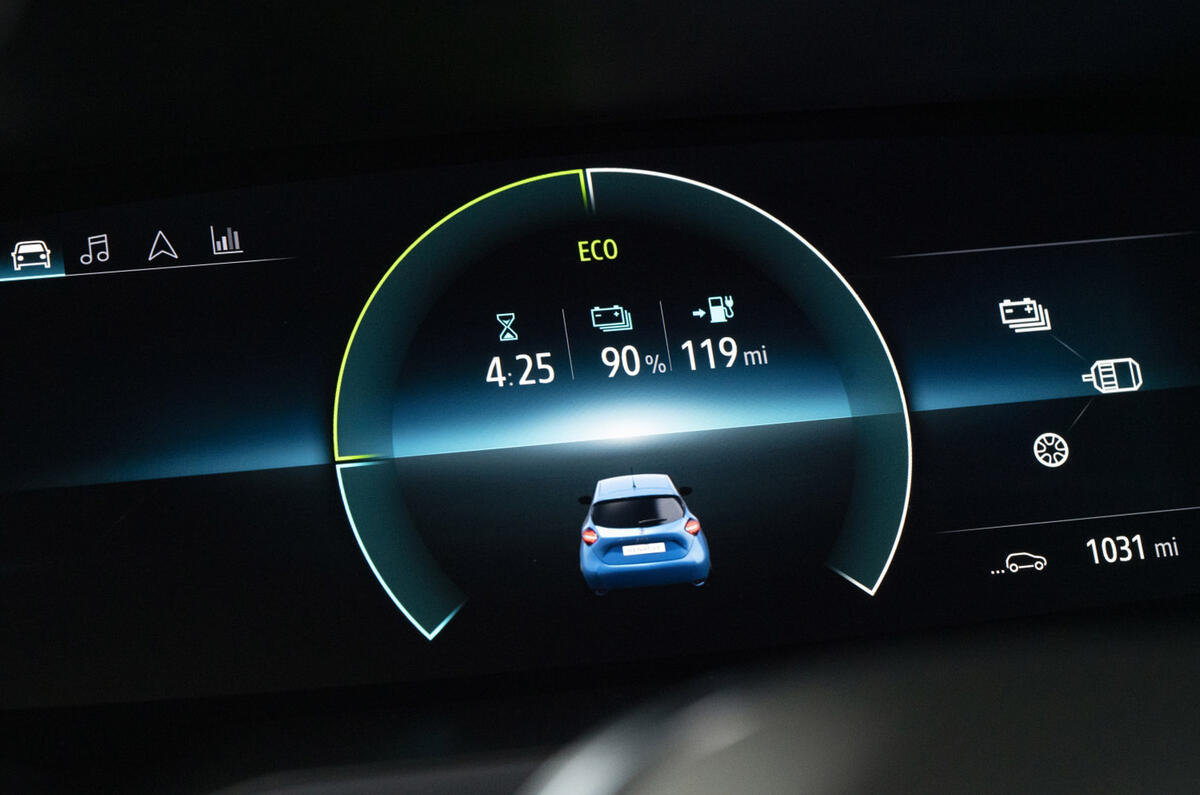











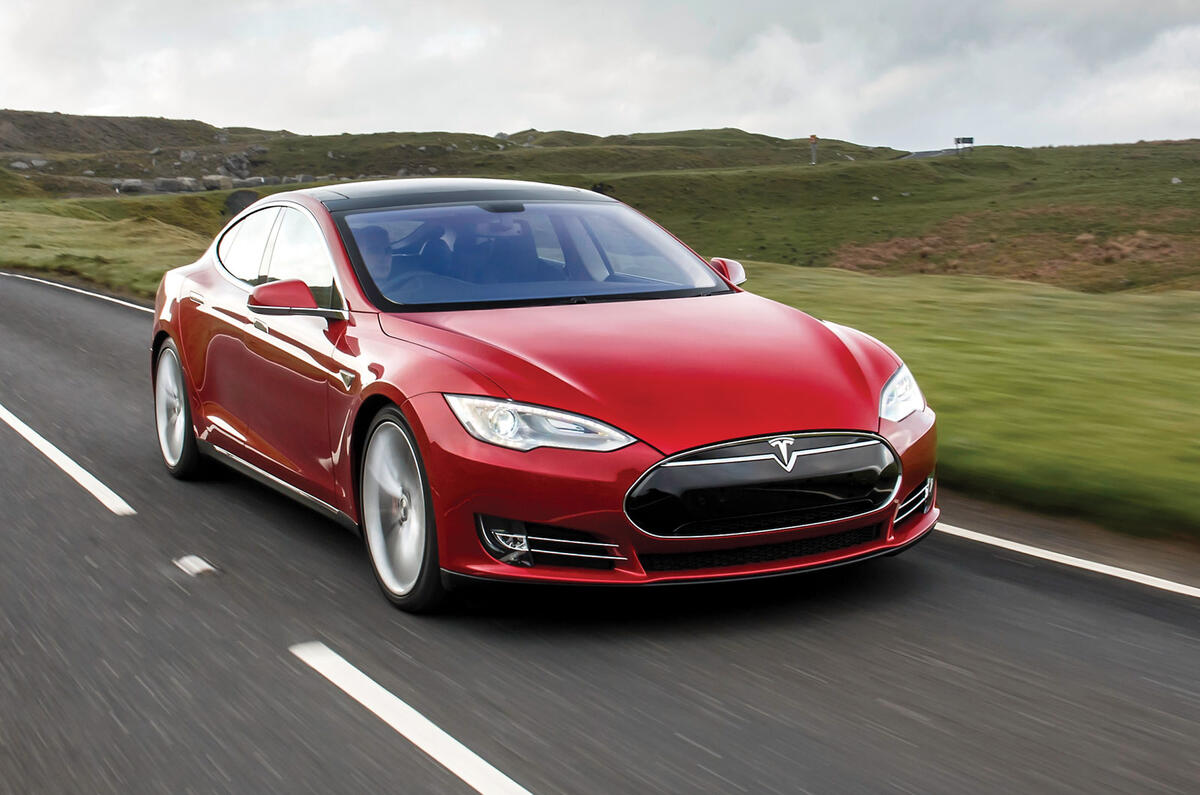
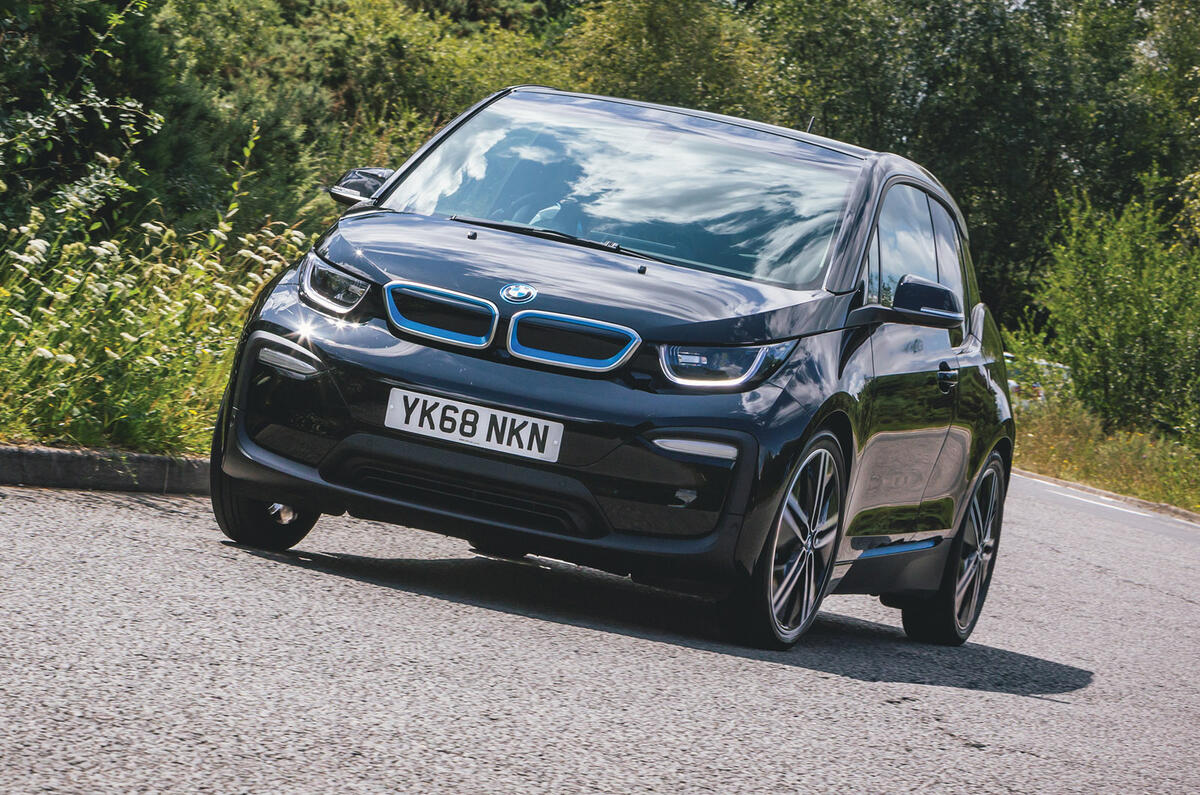
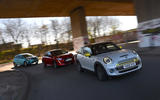

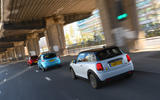

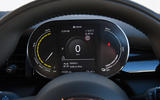

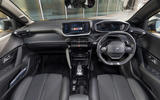







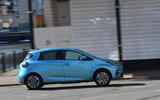









Join the debate
Add your comment
None of these cars can
None of these cars can perform as an all-round vehicle.
Instead, their limited range means they can be used only as local runabouts.
And a multi-vehicle household is not exactly a green proposition.
@si73
Same as with normal engine cars, the range experienced during the road test was less than the official figures given by the manufacturer after the car was tested officially in a laboratory
@russ13b
Thanks, makes sense, it was the as tested I wasn't sure about.
Aside from environmental claims versus real world
To me, a motorist, needing a method of transport, these EVs make absolutely no financial sense.
They continue to be much too expensive and compromised. And we aren't being 'spoiled for choice' whilst they continue to all be like that.
Come the 2032 ICE ban, I'll be using a combination of bicycle and public transport (God forbid) unless there are some huge improvements in how EVs work, along with some far more realistic pricing.
There is no 2032 ban
The ban would be on new car sales from 2035 or 2040, or it might be as early as 2032. It does not apply to existing cars. That would never be an election winning promise! So just buy a new petrol car in 2031 and there is no problem.
2032 ban has other implications
I appreciate that the ban refers to new car sales, but there will no doubt be a period of pain for ICE car owners leading up to that - i.e. extra taxation in many forms, lower fuel availability and higher prices from fewer petrol stations, grief from people launching social media witch hunts of people still driving ICE cars - all things that will strongly encourage people to buy an EV asap even before the ban is brought in.
I am environmentally and socially conscious but I'm not a fool - hence why I won't be forced into buying an EV until they improve and prices become realistic, hence my comment about using my bicycle and public transport instead of my ICE car when I don't need to (rather than buying an EV) to do my bit for the environment.